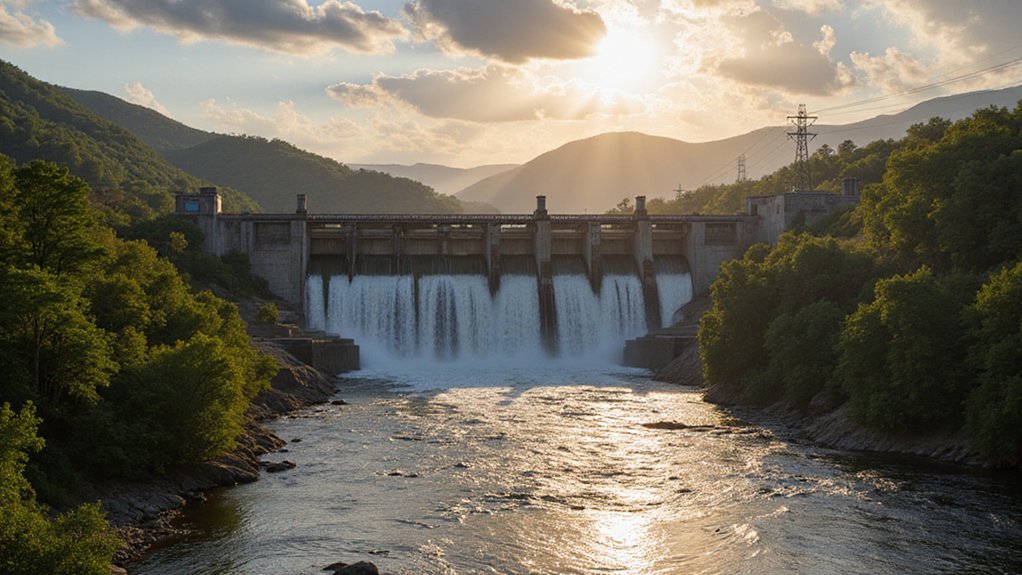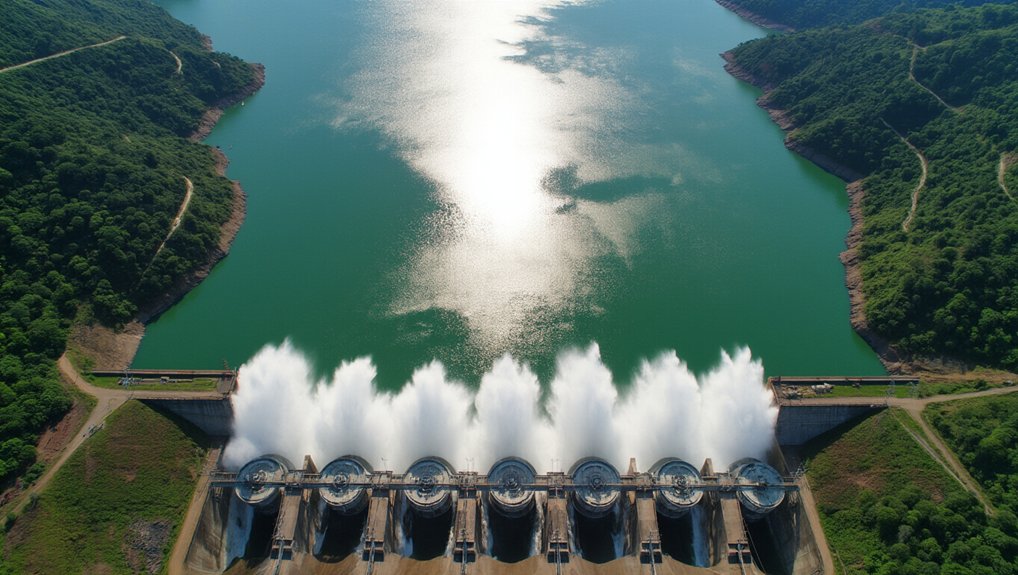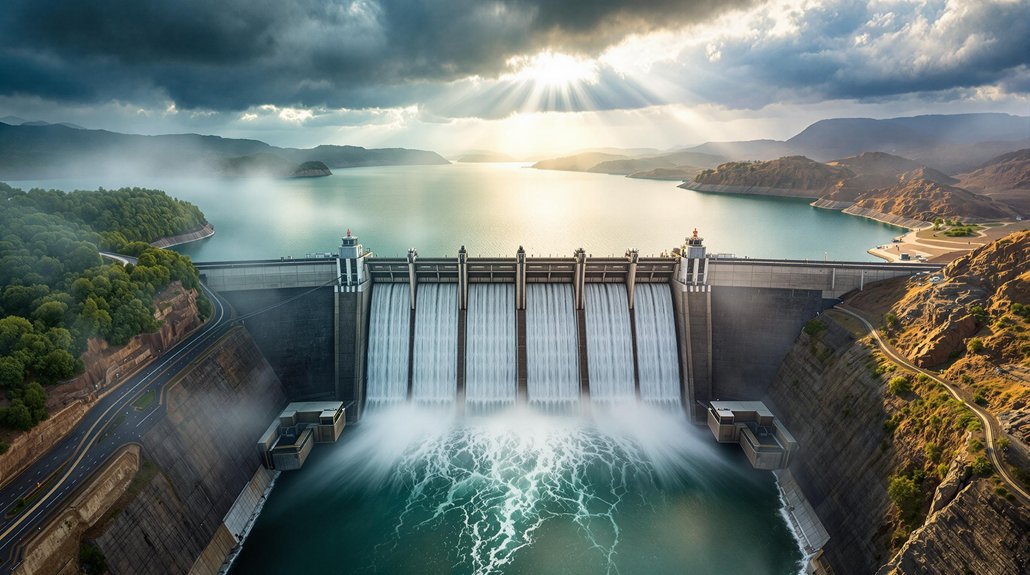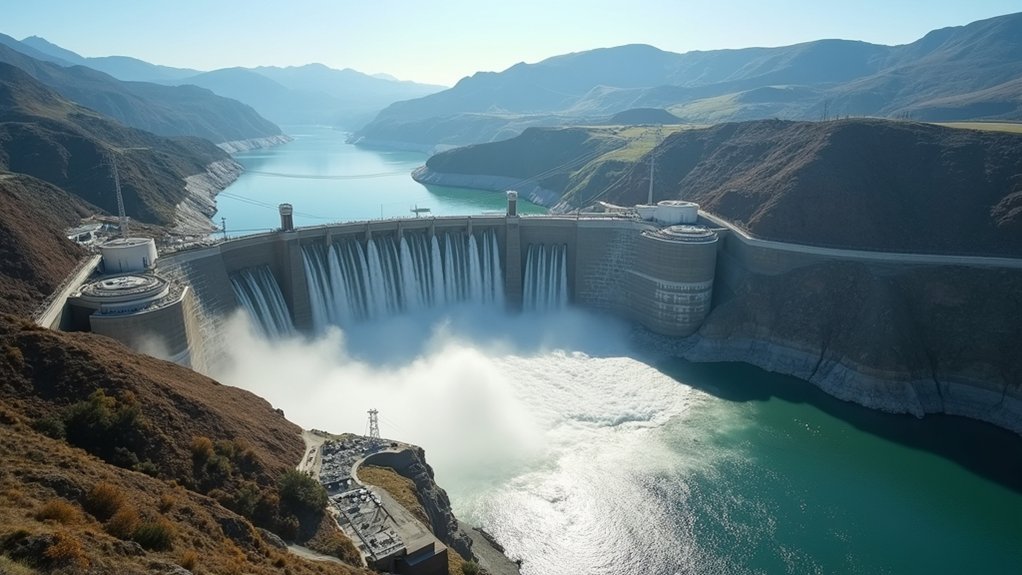While many renewable energy sources get attention for their flashy new technology, Virginia’s hydropower sector is quietly making waves across the state’s energy terrain. Google has just locked in a major deal to purchase clean hydroelectric power for its Virginia data centers through 2045, marking a significant shift in corporate energy sourcing.
The tech giant’s commitment highlights hydropower’s unique advantages. These facilities deliver reliable baseload power with lifespans exceeding 50 years and much lower operating costs than many alternatives. Virginia’s hydroelectric plants feed into the larger PJM Interconnection Power Grid, which serves multiple states in the region.
Hydropower delivers half-century lifespans and cost-effective baseload energy across Virginia’s regional power grid.
Recent developments show growing momentum in Appalachian hydropower. Agilitas Energy acquired two hydropower projects near Virginia’s borders, signaling renewed interest in this established technology. The projects will provide 44 MW of capacity that can power approximately 15,000 homes annually. These investments help Virginia expand its clean energy diversity and predictability while creating a buffer against market volatility.
The Virginia Clean Economy Act has been a key driver for this hydropower resurgence. The law set ambitious renewable targets that hydropower helps fulfill. Importantly, these projects enjoy bipartisan support, protecting them from political shifts. State agencies consistently emphasize an “all-of-the-above” approach that integrates hydropower with other renewable sources. Similar to the global trend, renewable energy investment in Virginia now significantly outpaces fossil fuel projects as the market shifts toward sustainable solutions.
From an infrastructure perspective, hydropower offers distinct advantages. These projects typically face minimal expansion costs compared to building brand new renewable facilities. They also provide critical grid stability services that help balance intermittent resources like wind and solar. The approach aligns with Virginia’s broader renewable strategy, which includes the Coastal Virginia Offshore Wind project expected to generate 2.6 GW of capacity by the end of 2026.
The economic benefits extend beyond clean energy. Hydropower creates high-quality local jobs in operations and maintenance. These facilities also contribute to regional economies through property taxes and direct investment, while their carbon-free electricity helps lower Virginia’s overall emissions.
As Google’s landmark deal demonstrates, Virginia’s hydropower transformation isn’t just about harnessing water – it’s about securing a stable, sustainable energy future that supports both economic growth and environmental goals for decades to come.
References
- https://www.energy.virginia.gov/public/documents/newsroom/2025/Virginia Move_Press_.pdf
- https://news.dominionenergy.com/press-releases/press-releases/2025/Coastal-Virginia-Offshore-Wind-CVOW-Project-Part-of-Comprehensive-All-of-the-Above-Energy-Strategy-to-Affordably-Meet-Growing-Energy-Needs-Continues-on-Schedule-Cost-Updated/default.aspx
- https://agilitasenergy.com/agilitas-energy-expands-into-hydropower-with-acquisition-of-two-projects-in-west-virginia-and-maryland/
- https://cleanview.co/planned-solar-projects/virginia
- https://www.wvtf.org/news/2025-07-10/virginias-massive-offshore-wind-project-lives-on









